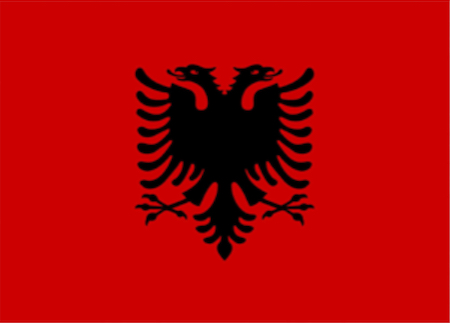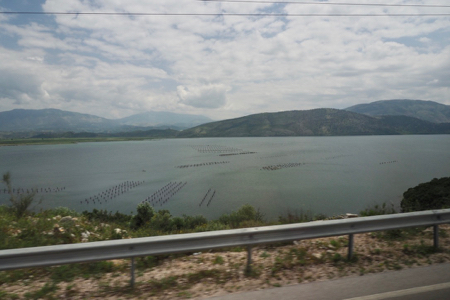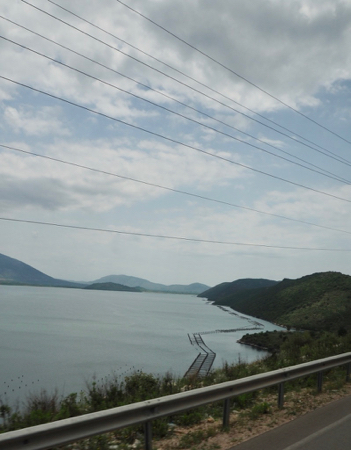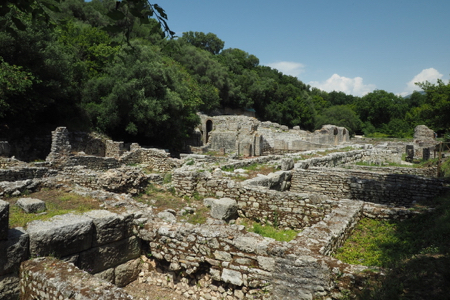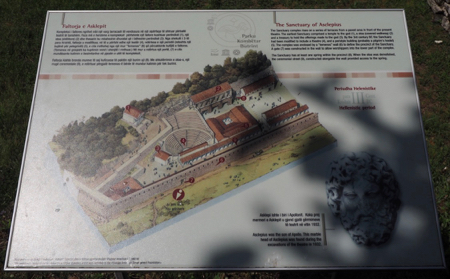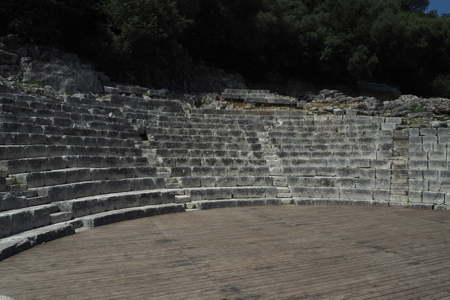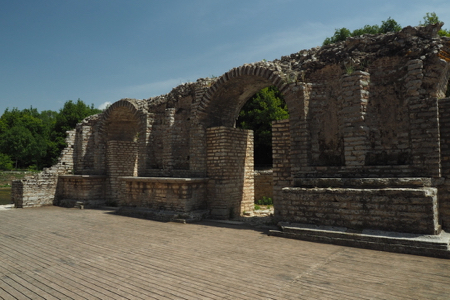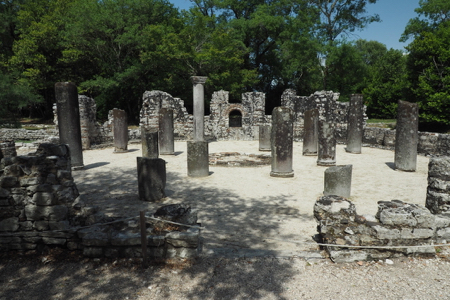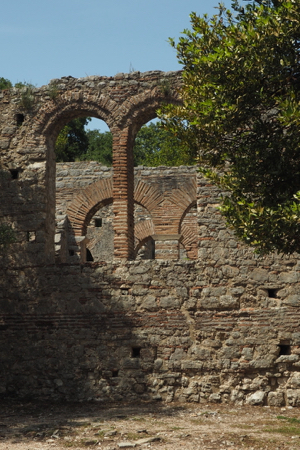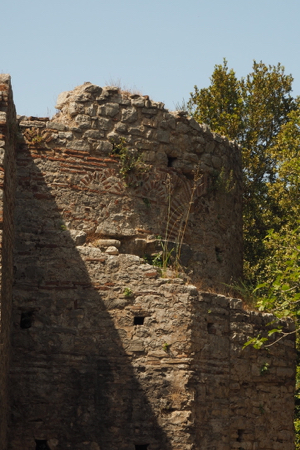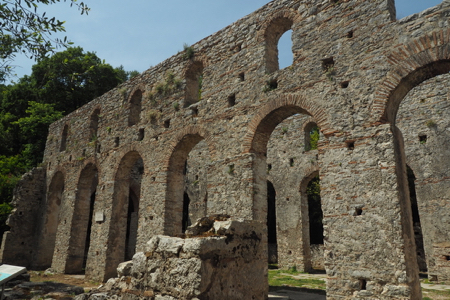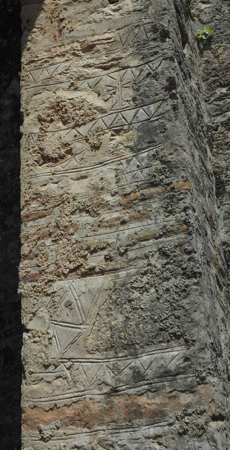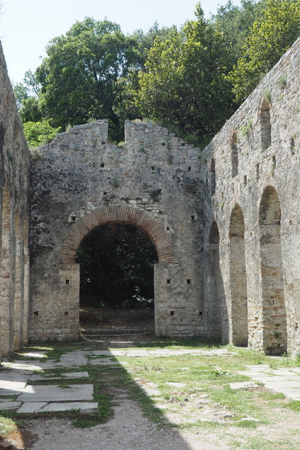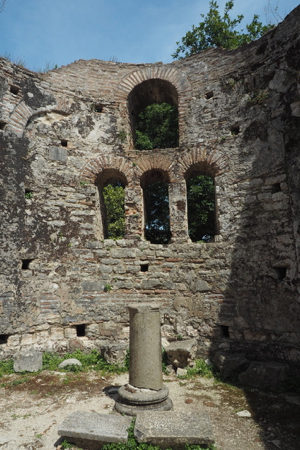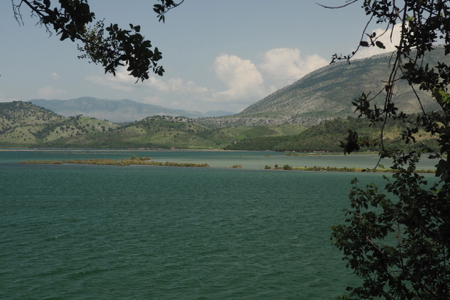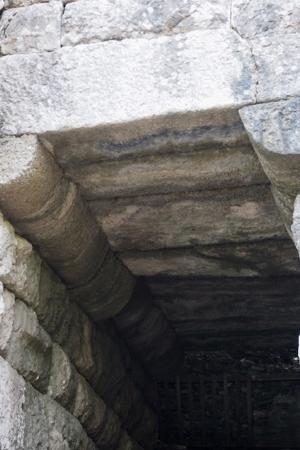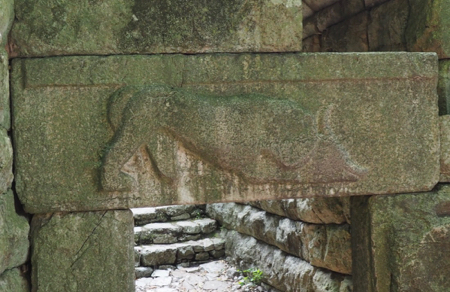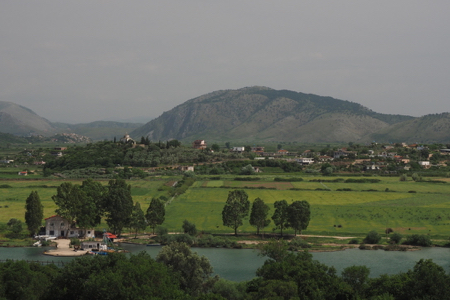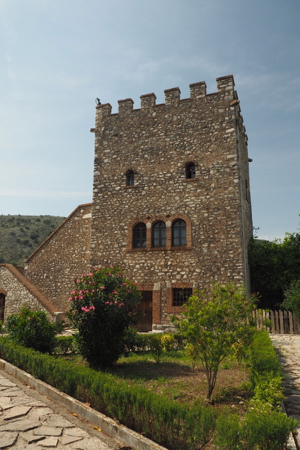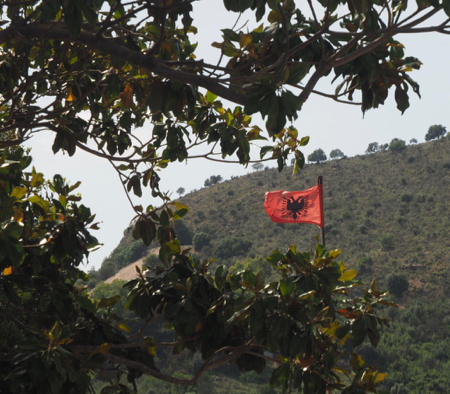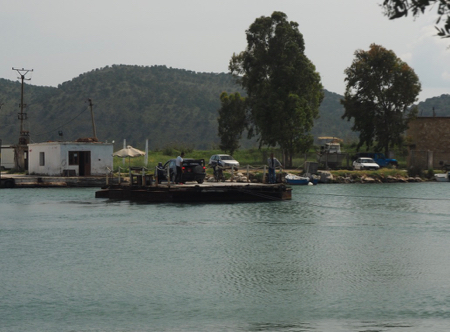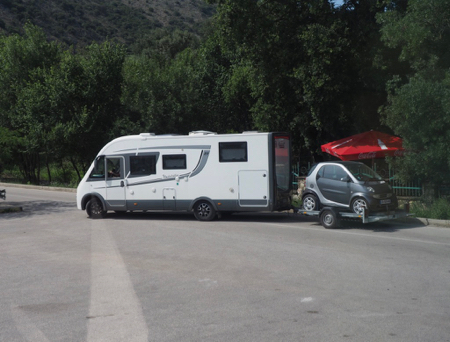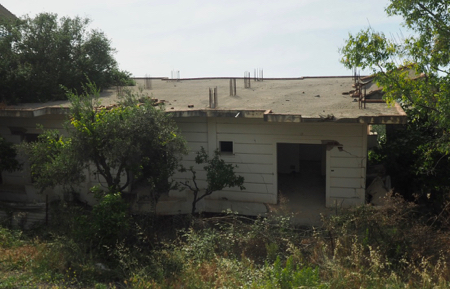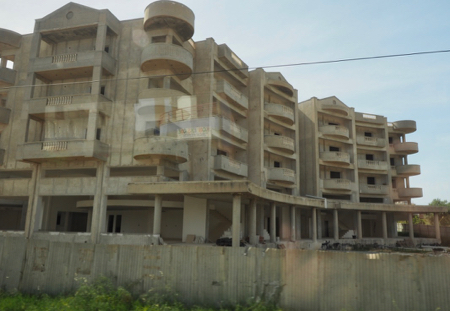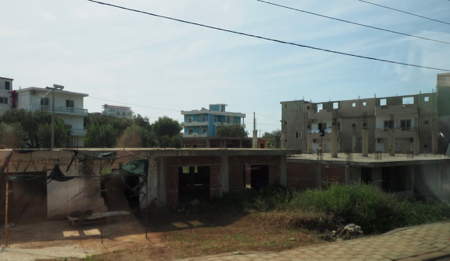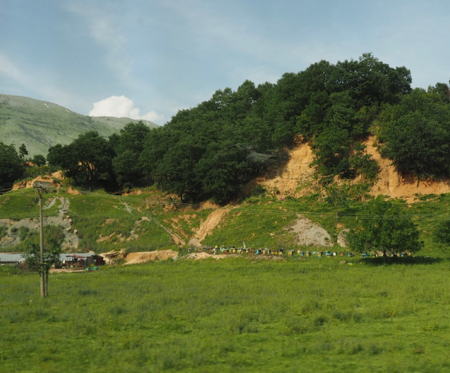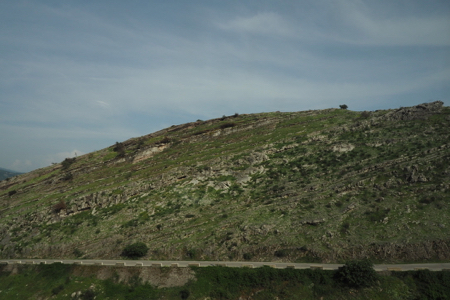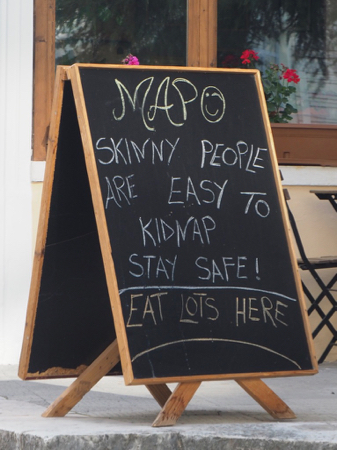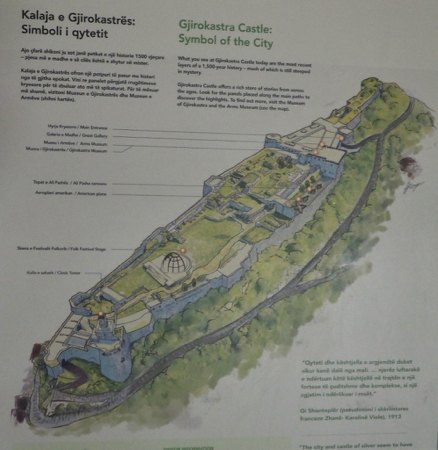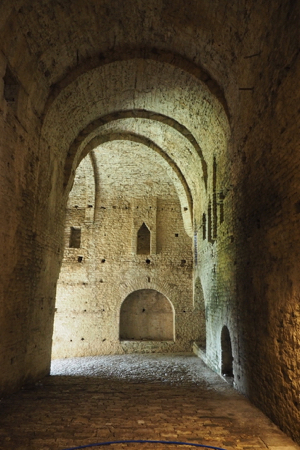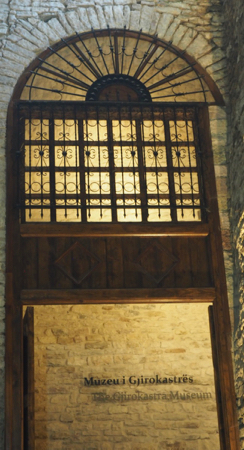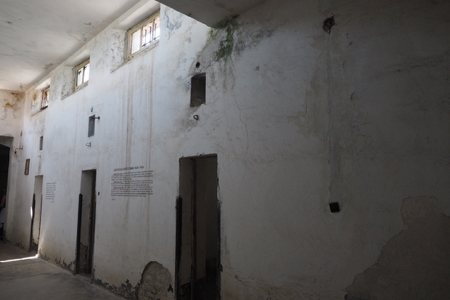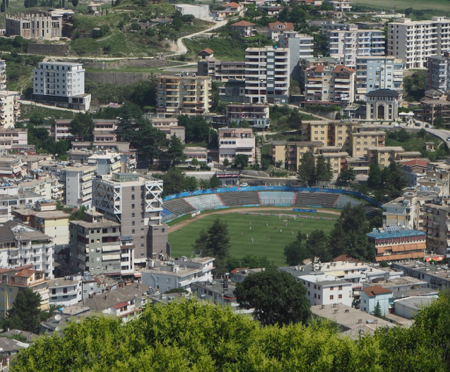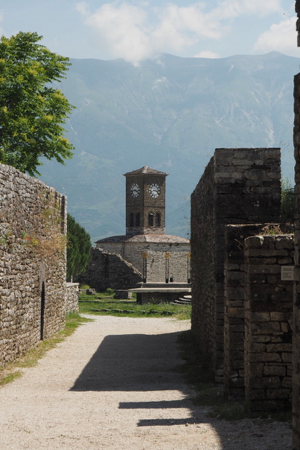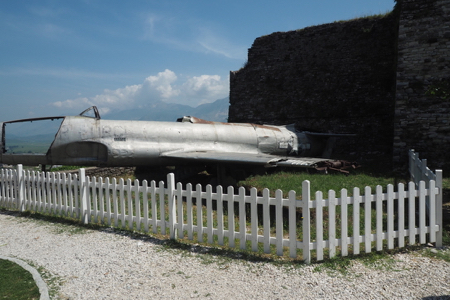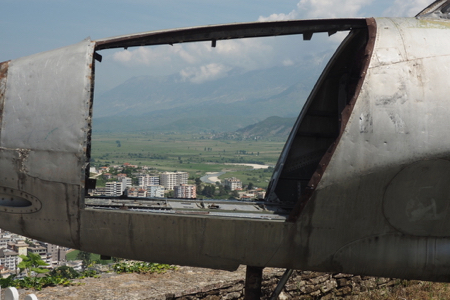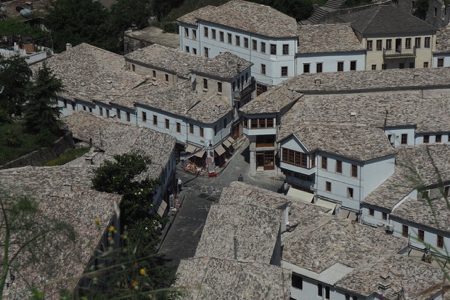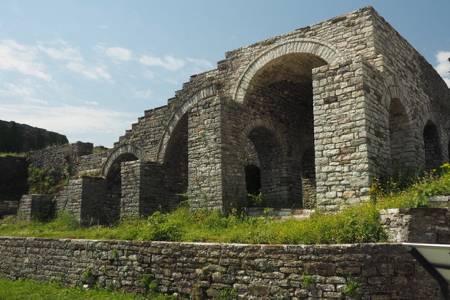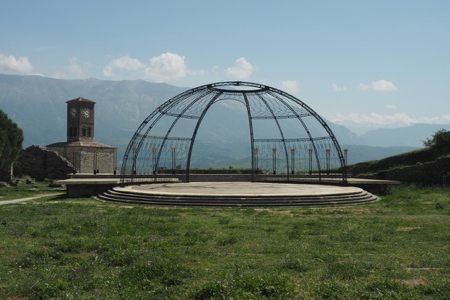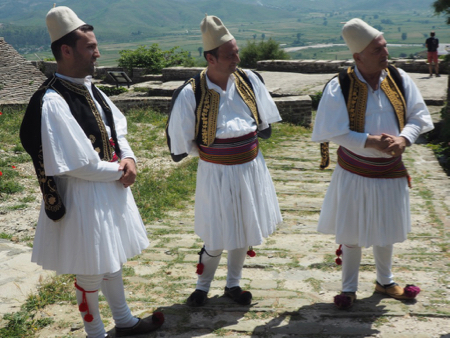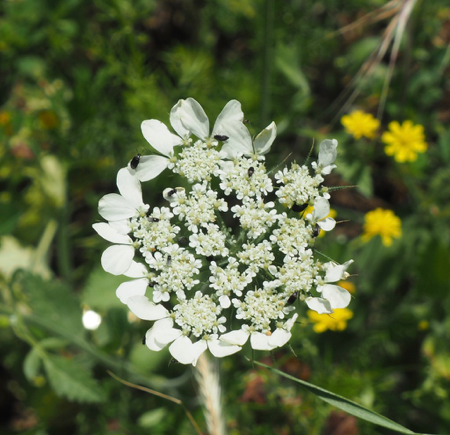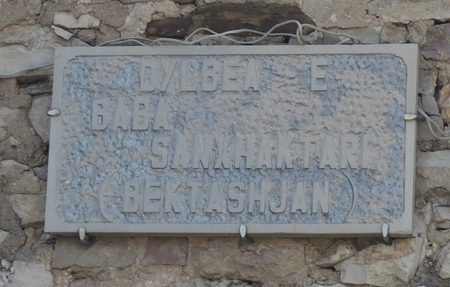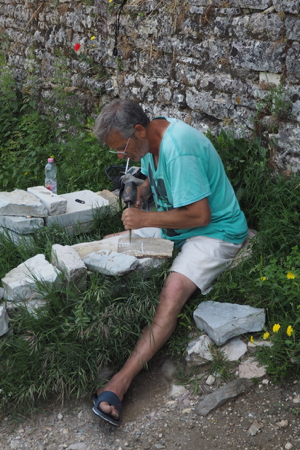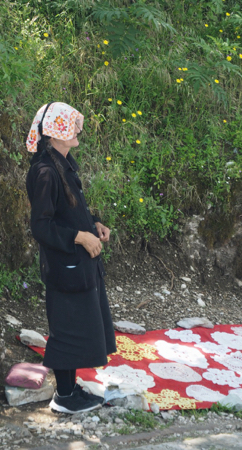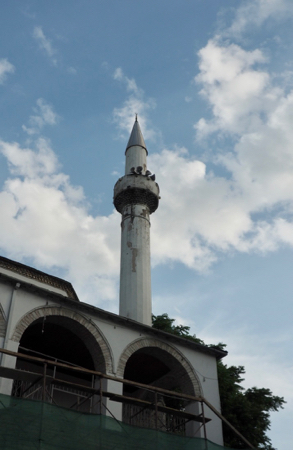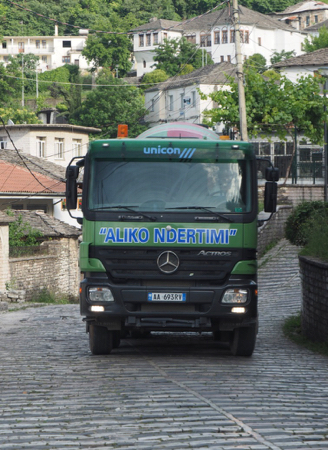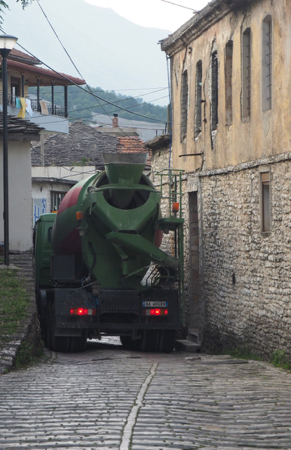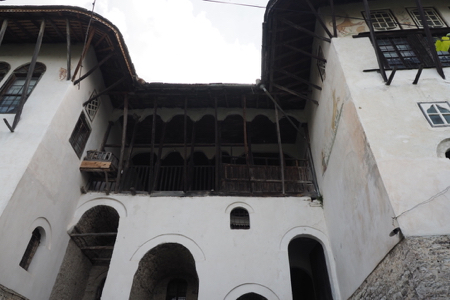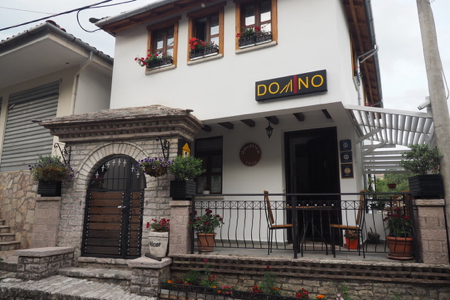We crossed the border into Albania without incident. Greece stamped our passports and Alexandra collected our passports and gave the Albanian officers “coffee” to bless our entrance without searching our luggage. Coffee is the term for bribery of one sort or another. We entered Albania at this southern crossing because the one most people use is often crowded. It is also full of trash along the Albanian roadsides because gypsies collect trash, sort what they want, and pitch the rest. Most of the trash is plastic.
Gazzi, our Albanian guide who spent some years in Detroit, joined our bus at the border.
We were told to be careful crossing streets because Albanians are very poor drivers. Until 1991, while Albania was in the Soviet Union, they were not allowed to drive so they have not had much practice. In 1991 the Albanians were so happy about their new freedoms that many of them started building single houses. The prosperity they anticipated did not occur so many of the buildings have only one floor or are just skeletons. Albania is a very poor nation but maybe their future will improve. Over time, Albania has been controlled by Rome, and the Byzantine and Ottoman Empires. They were free in 1912 but then there were the Balkan Wars. In WWII Mussolini and the Italians occupied this area and then the Russian communists. Albania is now a parliamentary democracy and they are happy for any help from Italy.
Flag of Albania
Albanian License Plates
The Ionian Sea is full of fish farms - clams, mussels, sea brim, and sea bass.
More fish farms
Gazzi led us on a tour of the Ancient City of Butrint, now a national park. It is on a peninsular island with the typical history - 8th c. BCE civilization, Greek colony in 4 BCE, then Roman, Venetian, and Ottoman. Ali Pasha’s palace was there in the 1700 and 1800s. From 1928 - 1939 the Italians helped to excavate and in 1992 Butrint became a UNESCO site maintained as a non-profit by the Albanian Ministry of Culture. Walking the site, we saw the ruins of the 2nd c. Roman baths, the sanctuary of Asclepius (health), theater, gymnasium, Ottoman palace, 550 CE baptistery with a mosaic floor, nymph fountain, and basilica from the 6th c. CE. Typical ruins, but none-the-less interesting.
Agora
Map of part of the ruins
Theater
Proscenium of the theater
Ruins of the Baptistry
Ruins of early Christian Basilica
Ruins of early Christian Basilica
Ruins of early Christian Basilica
Ruins of early Christian Basilica
Ruins of early Christian Basilica
Ruins of early Christian Basilica
Lake Butrint
Lintel
The Lion gate - probably Venetian
From the top of the acropolis
Venetian Castle atop the acropolis
Flying the flag
Ferry at Butrint
A camper - uncommon sight
We arrived in Gjirokaster and our hotel, Argjiro. We are right in the old town and walked up rough cobblestones past souvenir shops, a tiny market, a pharmacy, etc. to dinner. We had the same Greek style meal - Greek salad with wonderful tomatoes, baked feta, tasteless bread, grilled veggies, fried potatoes, spicy beef, grilled chicken, and baklava for dessert.
Along the road
Along the road
Along the road
Bee boxes
Stratified hillside
Cute sign in Gjirokaster
Sun, 5/20/18 - Gjirokaster, Albania
Gjirokaster (Silver Castle) is known for its 13th to 19th c. fortress (castle) located on a promontory of the White Mountains. We rode taxis up to the entrance and Gazzi led us on a 2 1/2 hour tour of the military fortress/castle/museum.We entered up a ramp covered by a very high arched ceiling. German and Italian cannons from WWII lined the route.
Albania’s 20th c. history: In 1912-13 Albania and surrounding countries declared themselves independent of the Ottomans and their borders were decided on. In WWI Albania was smart enough to stay neutral. In 1928 Zoe became Prime Minister, then president, and then changed the constitution to declare himself King Zoe. At first he did “good” things to westernize his country, kind of like Ataturk did in Turkey, with more public schooling, no more wearing of fezzes, etc. In 1939, Italy invaded and occupied Albania, declaring Fascism. Zoe escaped to England. During WWII the Fascists protected Jews so there were more Jews here after the war than before. In 1941 a Communist Party was formed and attacked the Italians in Albania while the Albanian partisans fought the communist nationalists in a moderate civil war. Great Britain supported the partisans but no Allied Forces landed here. Hoxha became the communist leader and assumed power. Hoxha cut ties with all Western countries and Greece which left them open to Tito and the formation of Yugoslavia which included seven previously independent countries. Tito and Stalin had a power struggle which ended in Albania, etc. becoming Soviet Bloc nations. These were very bad times. Albania got some help from China in 1978 and China is now very involved in the country. Hoxha died in 1985 and in 1992 Albania became independent again. Who owned what - buildings, farms, industries - before communism is still being determined in an attempt to return property to its rightful owners.
Map of Gjirokaster Castle
High, arched interior
Some of the rooms have been converted to a museum
Gale taking notes
Prison cells - the fort operated as a prison until 1968
View from the ramparts
Clock tower
Captured US Airforce plane (WWII)
Through the fuselage
Looking down at the old town
Ruins
Concert pavilion
Traditionally dressed group getting ready for a performance
Hemlock flower
Sign in front of the building of the “mystical Religion of Bektashi." They respect all religions and use the Bible, Koran, and Torah. They can’t marry so they will die out and they eat all foods except rabbit! Interesting ideas!
Wood carver
Vendor
In the late afternoon, we walked through the old town on the narrow cobbled streets, stepping aside for every car that passed, to visit the Skenduli House. It is a 300 year-old example of a rich person’s house in the 1700s. It was very Ottoman. The house was taken over by the communists and was declared a museum.The “owner” is trying to get compensation from the Albanian government for his lost property. In the meantime no one lives in the house and he sells tickets to view the three-story house and maintains it himself. The building looked 300 years old and ready to collapse.
Minaret
Trash truck
Very tight fit!
Skenduli House
Restaurant
We walked back to our room and ate cheese, PB, and crackers for dinner and relaxed for the evening.
| Return to Top | Return to Itinerary | Return to Trips page to view other trips | Return to Dreamcatcher Home Page |
